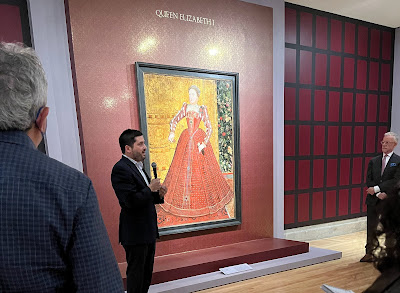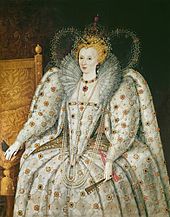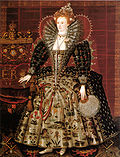Walk: Legion of Honor (The Tudors: Art and Majesty in Renaissance England)
Distance: 1.5 miles
 |
| Elizabeth I |
 |
| Elizabeth I |
This on-going similarity of image is no accident, of course. She was only the second female in England to sit on the throne, there were many (mostly Catholic) protesters to her coronation, the exchequer was in depleted state, and she was unmarried. Her image was her most important vehicle of self-promotion to her fellow countrypeople and abroad. To maintain control over that image she mandated that any portrait of Queen Elizabeth had to be approved by the Queen herself before it was finalized and presented to the public. She controlled what the artists were allowed to include in the portraits and requested that they add or subtract features.
Within her country her many Catholic enemies made it unsafe for her to travel around. So she chose to use portraits to present herself to her people, and it was essential that they showed an image of Elizabeth that would impress her subjects. Similarly abroad she needed to dispell any thoughts of monetary or personal, 'womanly' weakness. By design, Queen Elizabeth I was often painted in extraordinarily sumptuous masculine styled outfits, wearing a ruff around her neck. She wanted to be presented as equal to a powerful man, yet still with the“warmth, beauty and goodness” of being a woman.
And so it went throughout the 45 years of her reign, from her mid 20's to her late 60's. The red hair was a wig and the white face was achieved through white lead-based paste. The posture was nearly always fictitious because, of the over 200 portraits that were done of her, she only posed on eight occasions. But the jewelry and gowns were as lavish as portrayed, she herself was unfailingly intelligent and regal, and her reign is generally considered one of the most glorious in English history.


_-_Portrait_of_Queen_Elizabeth_I_-_Google_Art_Project.jpg/120px-Nicholas_Hilliard_(called)_-_Portrait_of_Queen_Elizabeth_I_-_Google_Art_Project.jpg)


No comments:
Post a Comment